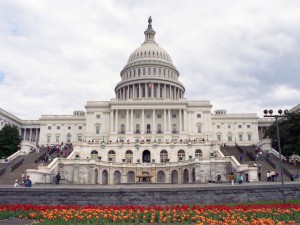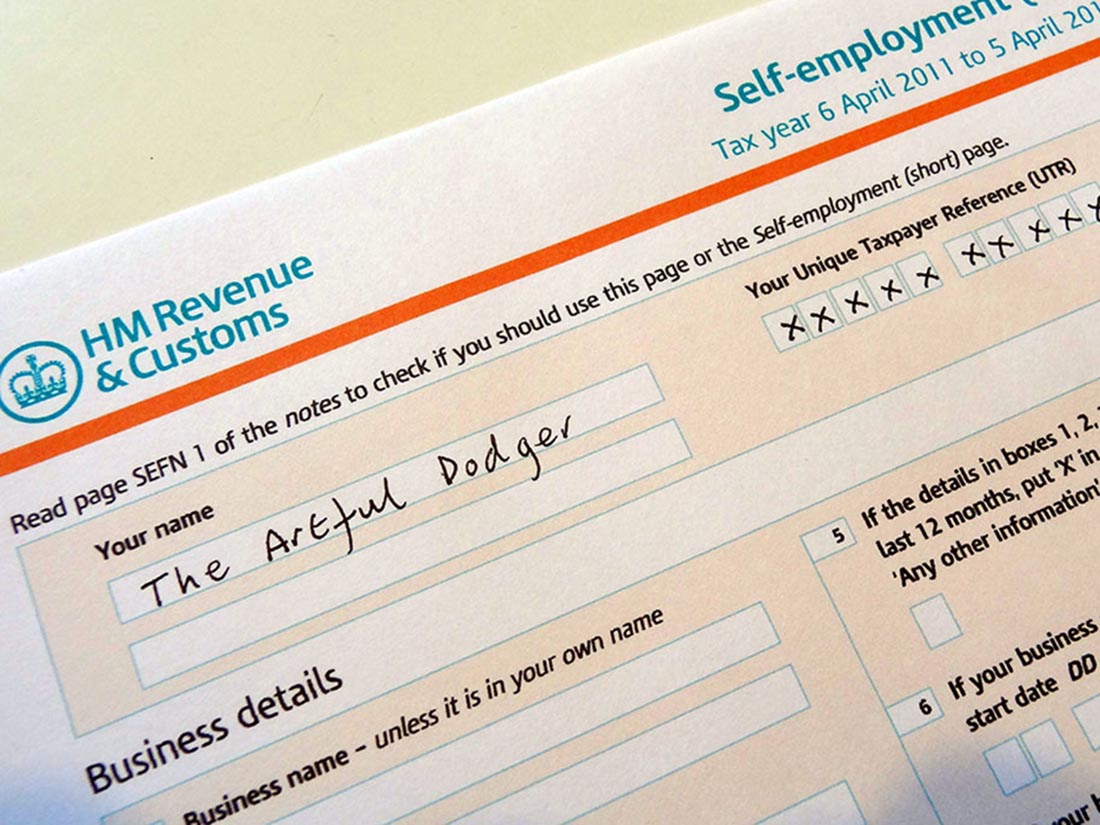 Everyone who drives in the UK is required to take out car insurance. Whilst fully comprehensive is voluntary, it is compulsory to have at least third party insurance, which covers damage to other vehicles. Insurance premiums are calculated based on a number of different variables, such that two people driving the same car may face wildly different costs.
Everyone who drives in the UK is required to take out car insurance. Whilst fully comprehensive is voluntary, it is compulsory to have at least third party insurance, which covers damage to other vehicles. Insurance premiums are calculated based on a number of different variables, such that two people driving the same car may face wildly different costs.
Although there are many insurance companies to choose from, this industry has been referred to the Competition Commission by the OFT as it was ‘worried the structure of the market was making costs and premiums unnecessarily high.’
According to Moneysupermarket, the average cost of car insurance reached a high of £554 in April 2011, but have fallen by £76 since. With tight incomes across the UK for many families, high car insurance premiums is another strain and thus this investigation will come at an apt time, even though the findings of the CC may not be reported for 2 years. The Association of British Insurers (ABI) said that the investigation would:
‘bring much-needed reforms to the market that will, in turn, result in lower car insurance premiums for consumers’.
 The problem seems to be that when an individual is involved in an accident and sends their car off for repairs, their insurance company doesn’t have much control over the bills they end up paying, which can be inflated by £155 each time. This therefore leads into higher costs for the insurance company, which are then passed on the driver in the form of an increased premium. Other concerns were that courtesy cars were being offered, at an estimated cost of £560 per vehicle (according to the OFT) and that drivers were using these cars for longer than necessary, once again causing costs to rise.
The problem seems to be that when an individual is involved in an accident and sends their car off for repairs, their insurance company doesn’t have much control over the bills they end up paying, which can be inflated by £155 each time. This therefore leads into higher costs for the insurance company, which are then passed on the driver in the form of an increased premium. Other concerns were that courtesy cars were being offered, at an estimated cost of £560 per vehicle (according to the OFT) and that drivers were using these cars for longer than necessary, once again causing costs to rise.
Altogether, it has been suggested that the actions of the insurance company of ‘not-at-fault’ drivers, car hire companies, repairers and brokers push up the prices for ‘at-fault’ drivers’ insurance companies. Given that any insurance company is just as likely to be the ‘at-fault’ insurance company, they all face rising costs.
 Back in May, the OFT had already decided that the car insurance market required a more detailed investigation, because of the ‘dysfunctionality’ of the market. Following a public consultation, the industry will now face an investigation by the CC. One additional area that may be of interest to the CC came to light last year, where it was found that insurance companies were claiming against themselves in a bid to drive up premiums. Although the investigation will take some time, it is still a timely review for many drivers, who have seen the cost of motoring reach record highs. The following articles consider the market for car insurance.
Back in May, the OFT had already decided that the car insurance market required a more detailed investigation, because of the ‘dysfunctionality’ of the market. Following a public consultation, the industry will now face an investigation by the CC. One additional area that may be of interest to the CC came to light last year, where it was found that insurance companies were claiming against themselves in a bid to drive up premiums. Although the investigation will take some time, it is still a timely review for many drivers, who have seen the cost of motoring reach record highs. The following articles consider the market for car insurance.
Articles
Car insurance market referred to Competition Commission BBC News (28/9/12)
No quick fix for motor insurance abuses, says watchdog Independent, Simon Read (29/9/12)
Car insurance industry faces probe The Press Association (28/9/12)
Competition Commission referral will take time to lower motor insurance premiums The Telegraph, Rosie Murray-West (28/9/12)
UK car insurance probe over-shadows Direct Line IPO Reuters, Matt Scuffham and Myles Neligan (28/9/12)
 Car insurance scrutinized over high premiums Sky News (28/9/12)
Car insurance scrutinized over high premiums Sky News (28/9/12)
Rip-off motor insurance firms face competition watchdogs probe over £225million racket Mail Online, Ray Massey (28/9/12)
Questions
- Why are car insurance firms willing to take on other people’s risks?
- What conditions must exist in a market for private companies to provide acr insurance (or insurance of any kind)?
- Why is third-party insurance compulsory, whereas people can opt for fully comprehensive insurance?
- What powers does (a) the OFT and (b) the Competition Commission have? Is it likely that this report will have any impact on car insurance premiums?
- What allegations have been made that help to explain why insurance premiums I this industry have increased?
- Is there an argument for allowing the industry itself to provide its own regulation?
- In which market structure would you place the car insurance industry?
 The ECB president, Mario Draghi, has announced a new programme of ‘Outright Monetary Transactions (OMTs)’ to ease the difficulties of countries such as Greece, Spain, Portugal and Italy. The idea is to push down interest rates for these countries’ bonds. If successful, this will make it more affordable for them to service their debts.
The ECB president, Mario Draghi, has announced a new programme of ‘Outright Monetary Transactions (OMTs)’ to ease the difficulties of countries such as Greece, Spain, Portugal and Italy. The idea is to push down interest rates for these countries’ bonds. If successful, this will make it more affordable for them to service their debts.
OMTs involve the ECB buying these countries’ bonds on the secondary market (i.e. existing bonds). This will be limited to bonds with no more than three years to maturity. Although restricting purchases to the secondary market would not involve the ECB lending directly to these countries, the bond purchases should push down interest rates on the secondary market and this, in turn, should allow the countries to issue new bonds at lower rates on the primary market.
The OMT programme replaces the previous Securities Markets Programme (SMP), which began in May 2010. This too involved purchasing bonds on the secondary market. By the time of the last actions under SMP in January 2012, €212 billion of purchases had been made. Unlike the SMP, however, OMTs are in principle unlimited, with the ECB president, Mario Draghi, saying that the ECB would do ‘whatever it takes’ to hold the single currency together. This means that it will buy as many bonds on the market as are necessary to bring interest rates down to sustainable levels.
Critics, however, argue that this will still not be enough to stimulate the eurozone economy and help bring countries out of recession. They give two reasons.
The first is that OMTs differ from the quantitative easing programmes used in the UK and USA. OMTs would not increase the eurozone money supply as the ECB would sell other assets to offset the bond purchases. This process is known as ‘sterilisation’, which is defined as actions taken by a central bank to offset the effects of foreign exchange flows or its own bond transactions so as to leave money supply unchanged.
The second reason is that OMTs will be conducted only if countries stick to previously agreed strong austerity measures. This is something that it looking increasingly unlikely as protests against the cuts mount in countries such as Greece and Spain.
Articles
Super Mario to the rescue Financial Standard, Benjamin Ong (7/9/12)
Outright monetary transactions: Lowdown on bond-buying scheme Irish Times, Dan O’Brien (7/9/12)
Draghi comments at ECB news conference Reuters (6/9/12)
ECB’s Mario Draghi unveils bond-buying euro debt plan BBC News (6/9/12)
ECB Market Intervention: Outright Monetary Transactions (“OMT”) – A Preliminary Assessment Place du Luxembourg (9/9/12)
Evaluating the OMT: OrlMost Too late? Social Europe Journal, Andrew Watt (7/9/12)
Mario Draghi speech: what the analysts said The Telegraph (6/9/12)
ECB challenges German concern over bond-buying Irish Times, Derek Scally (26/9/12)
Draghi: efforts helping to support stable future MarketWatch, Tom Fairless (25/9/12)
 Mario and Mariano versus the man with the beard BBC News, Paul Mason (6/9/12)
Mario and Mariano versus the man with the beard BBC News, Paul Mason (6/9/12)
Good week for the euro – but also a warning BBC News, Stephanie Flanders (12/9/12)
The price of saving the eurozone BBC News, Robert Peston (26/9/12)
Special Report – Inside Mario Draghi’s euro rescue plan Reuters, Paul Carrel, Noah Barkin and Annika Breidthardt (25/9/12)
ECB to face biggest test on euro gambit Financial Times, Michael Steen and Peter Spiegel (25/9/12)
Press release
ECB: Monetary policy decisions ECB Press Release, (6/9/12)
Questions
- What are the key features of the OMT programme? How does it differ from the former Securities Markets Programme (SMP)?
- In what ways does the OMT programme differ from the quantitative easing programmes in the USA and UK?
- How will the ECB’s buying bonds in the secondary market influence the primary bond market? What will influence the size of the effect?
- How does sterilisation work in (a) the bond market; (b) the foreign exchange market?
- Why is it claimed that the OMT programme is a necessary but not sufficient condition for solving the crisis in the eurozone? What additional measures would you recommend and why?
- What are the risks associated with the OMT programme?
Original post
As a resident of Bristol it is with considerable interest that I’m following the development of the Bristol pound, due for launch in September 2012. One Bristol pound will be worth one pound sterling.
The new currency will be issued in denominations of £1, £5, £10 and £20 and there is a local competition to design the notes. Participating local traders will open accounts with Bristol Credit Union, which will administer the scheme. It has FSA backing and so all deposits will be guaranteed up to £85,000.
 The idea of a local currency is not new. There are already local currencies in Stroud in Gloucestershire, Totnes in Devon, Lewes in East Sussex and Brixton in south London. The Bristol scheme, however, is the first to be introduced on a city-wide scale. The administrators are keen that use of the currency should be as easy as possible; people will be able to open accounts with Bristol Credit Union, pay bills online and pay shopkeepers by mobile phone text message (a system used in many countries, but not in the UK).
The idea of a local currency is not new. There are already local currencies in Stroud in Gloucestershire, Totnes in Devon, Lewes in East Sussex and Brixton in south London. The Bristol scheme, however, is the first to be introduced on a city-wide scale. The administrators are keen that use of the currency should be as easy as possible; people will be able to open accounts with Bristol Credit Union, pay bills online and pay shopkeepers by mobile phone text message (a system used in many countries, but not in the UK).
As the money has to be spent locally, the aim is to help local business, of which more han 100 have already signed up to the scheme. Bristol has a large number of independent traders – in fact, the road where I live is off the Gloucester Road, which has the largest number of independent traders on one street in the UK. The organisers of the Bristol pound are determined to preserve the diversity of shops and prevent Bristol from becoming a ‘clone town’, with high streets full of chain stores.
 But how likely is the scheme to encourage people to shop in independent shops and deal with local traders? Will the scheme take off, or will it fizzle out? What are its downsides?
But how likely is the scheme to encourage people to shop in independent shops and deal with local traders? Will the scheme take off, or will it fizzle out? What are its downsides?
Update
The Bristol pound was duly launched on September 19 and there has been much local interest. The later videos and articles below look at reactions to the new currency and at its chances of success in driving local business.
Videos and webcasts
 The town printing its own currency [Stroud] BBC News, Tim Muffett (22/3/10)
The town printing its own currency [Stroud] BBC News, Tim Muffett (22/3/10)
 Brixton launches its own currency BBC News (17/9/09)
Brixton launches its own currency BBC News (17/9/09)
 Local currency BBC Politics Show (30/3/09)
Local currency BBC Politics Show (30/3/09)
 Local currency for Lewes BBC News, Rob Pittam (13/5/08)
Local currency for Lewes BBC News, Rob Pittam (13/5/08)
 The Totnes Pound transitionculture.org on YouTube, Clive Ardagh (21/1/09)
The Totnes Pound transitionculture.org on YouTube, Clive Ardagh (21/1/09)
 Local Currencies – Replacing Scarcity with Trust Peak Moment on YouTube, Francis Ayley (8/2/07)
Local Currencies – Replacing Scarcity with Trust Peak Moment on YouTube, Francis Ayley (8/2/07)
Videos and webcasts: update

 Bristol Pound Launches ITV News, West, Tanya Mercer (19/9/12)
Bristol Pound Launches ITV News, West, Tanya Mercer (19/9/12)
 Can Bristol Pound boost local trade? BBC News, West, Jon Kay (19/9/12)
Can Bristol Pound boost local trade? BBC News, West, Jon Kay (19/9/12)
 The Bristol Pound BristolPound on YouTube, Chris Sunderland (11/6/12)
The Bristol Pound BristolPound on YouTube, Chris Sunderland (11/6/12)
 Bristol Pound feature on BBC1 Inside Out BBC One in the West on YouTube, Dave Harvey (30/6/12)
Bristol Pound feature on BBC1 Inside Out BBC One in the West on YouTube, Dave Harvey (30/6/12)
 Bristol Pound launched to keep trade in the city BBC News, Dave Harvey (19/9/12)
Bristol Pound launched to keep trade in the city BBC News, Dave Harvey (19/9/12)
 Bristol pound launched to boost local businesses BBC Radio 5 Live, Ciaran Mundy (19/9/12)
Bristol pound launched to boost local businesses BBC Radio 5 Live, Ciaran Mundy (19/9/12)
Articles
The Bristol Pound set to become a flagship for local enterprise The Random Fact, Thomas Foss (7/2/12)
What is the point of local currency? The Telegraph, Rosie Murray-West (7/2/12)
The Bristol pound: will it save the (local) economy? Management Today, Emma Haslett (6/2/12)
‘Bristol Pound’ currency to boost independent traders BBC News Bristol, Dave Harvey (6/2/12)
We don’t want to be part of ‘clone town Britain’: City launches its own currency to keep money local Mail Online, Tom Kelly (6/2/12)
British Town Prepares To Launch Its Own Currency — Here’s How That’s Going To End Business Insider, Macro Man (7/2/12)
They don’t just shop local in Totnes – they have their very own currency Independent, Rob Sharp (1/5/08)
Articles: update
Bristol banks on alternative pound to safeguard independent retailers Guardian, Steven Morris (21/9/12)
Bristol launches city’s local currency The Telegraph, Rachel Cooper (19/9/12)
The Bristol Pound is launched to help independent retailers Independent, Rob Hastings (20/9/12)
Banknotes, local currencies and central bank objectives Bank of England Quarterly Bulletin (Q4/2013)
Bristol Pound official site
Bristol Pound: Our City, Our Money Bristol Pound
Questions
- What are the advantages of having a local currency?
- What are the dangers in operating a local currency?
- What steps can be taken to avoid the dangers?
- Can Bristol pounds be ‘created’ by Bristol Credit Union? Could the process be inflationary?
- What market failures are there in the pattern of shops in towns and cities? To what extent is the growth of supermarkets in towns and the growth of out-of-town shopping malls a result of market failures or simply of consumer preferences?
- Are local currencies only for idealists?
- What benefits are there for shoppers in Bristol of using Bristol pounds?
 The US Federal Reserve bank has launched a third round of quantitative easing, dubbed QE3. The hope is that the resulting growth in money supply will stimulate spending and thereby increase growth and employment.
The US Federal Reserve bank has launched a third round of quantitative easing, dubbed QE3. The hope is that the resulting growth in money supply will stimulate spending and thereby increase growth and employment.
Ben Bernanke, the Fed Chairman, had already said that the stagnation of the labour market is of grave concern because of “the enormous suffering and waste of human talent it entails, but also because persistently high levels of unemployment will wreak structural damage on our economy that could last for many years”. Not, surprisingly, the markets were expecting strong action – and that is what they got.

Under QE3, the Fed will buy mortgage-backed securities of $40bn per month. And this will go on for as long as it takes for the employment market to show significant improvement. It is this open-ended commitment which makes QE3 different from QE1 and QE2. Under these earlier rounds of quantitative easing, the Fed purchased a fixed amount of assets – $2.3tn of bonds.
QE3 also comes on top of a policy in operation since September 2011 of buying long-term government bonds in the market and selling shorter-dated ones. This ‘funding’ operation is known as ‘Operation Twist’.
The markets responded favourably to the announcement of QE3, especially to the fact that its size and duration would depend on the state of the real economy. Nevertheless, there are real questions about its likely effectiveness. The most important is whether the increase in narrow money will translate into an increase in borrowing and spending and hence an increase in broad money; or whether the rise in narrow money will be offset by a fall in the velocity of circulation as banks seek to increase their liquidity ratios and to recapitalise.
The following articles look at the details of QE3 and whether it is likely to achieve its desired result. Will the Fed be forced to raise asset purchases above $40bn per month or to introduce other measures?
Articles
Federal Reserve to buy more debt to boost US economy BBC News (14/9/12)
Bernanke takes plunge with QE3 Financial Times, Robin Harding (14/9/12)
US monetary policy at an important turning point Financial Times, Gavyn Davies (2/9/12)
Cliffhanger The Economist (22/9/12)
Your flexible Fed BBC News, Stephanie Flanders (13/9/12)
Back Ben Bernanke’s QE3 with a clothes peg on your nose The Telegraph, Ambrose Evans-Pritchard (23/9/12)
QE3 Stimulus from Federal Reserve Drives Mortgage Rates Down to Record Lows TellMeNews, Sharon Wagner (24/9/12)
Helicopter Ben Bernanke: The Problem With QE1, QE2, QE3 and QE Infinity TellMeNews, Martin Hutchinson (18/9/12)
QE: More bang than buck Business Spectator, Stephen Grenville (18/9/12)
QE3: What it Really Means PBS NewsHour, Paul Solman (20/9/12)
US Data
US Money Stock Measures Federal Reserve Statistical Release
Data Releases Board of Governors of the Federal Reserve System
Civilian Unemployment Rate (UNRATE) FRED Economic Data
Questions
- What distinguishes the Fed’s QE3 from its QE1 and 2?
- What will determine the likely success of QE3 in stimulating the real economy?
- Why has there been a huge surge in liquidity preference in the USA? What would have been the impact of this without QE1 and QE2?
- Explain what is meant by ‘portfolio balance effects’ and how significant are these in determining the success of quantitative easing?
- Does QE3 suggest that the Fed is pursuing a type of Taylor Rule?
- Why might QE3 be a “pro-cyclical” blunder?
- To what extent would monetarists approve of the Fed’s policies on QE?
- How is QE3 likely to affect the dollar exchange rate and what implications will this have for countries trading with the USA?
 The UK has always been an attractive place for investment, as foreign companies look to cities such as London for stable investment opportunities. This provides not only jobs and output, but also tax revenue for the government. However, one drawback is the lost tax revenue through tax avoidance schemes and big businesses say that if the UK is to remain competitive it needs to look at cutting taxes and bureaucracy.
The UK has always been an attractive place for investment, as foreign companies look to cities such as London for stable investment opportunities. This provides not only jobs and output, but also tax revenue for the government. However, one drawback is the lost tax revenue through tax avoidance schemes and big businesses say that if the UK is to remain competitive it needs to look at cutting taxes and bureaucracy.
In recent months, we have seen cases of individuals being prosecuted for tax evasion and more recently in the USA, Microsoft and Hewlett-Packard have been criticized by the Senate for allegedly moving an estimated £13bn to offshore accounts. (Microsoft and HP deny any wrong-doing). It is cases like this that provide an argument for governments to cut business rates and avoid losing business and jobs to other tax havens. Lord Fink, who is a Director of Firms located in a variety of tax havens said:
’I don’t see why the UK should not compete for jobs that at present are going to the Cayman Islands’
 Tax havens are obviously attractive to firms, as they provide a means of retaining more of a firm’s earnings and hence their profits. By offering a much lower rate of tax than countries such as the UK, they help to ease the tax burden on wealthy individuals and investors in hedge funds, along with many others.
Tax havens are obviously attractive to firms, as they provide a means of retaining more of a firm’s earnings and hence their profits. By offering a much lower rate of tax than countries such as the UK, they help to ease the tax burden on wealthy individuals and investors in hedge funds, along with many others.
The question is, do these lower tax rates discourage investment into the UK and thus would a relaxation of Revenue Customs’ rules mean an increase in inward investment and the other positive things that this would bring? Or would a decrease in tax rates for wealthy investors send the wrong message?
 In a time of austerity, tax cuts for the rich are never going to be a popular policy – at least not amongst the ‘non-rich’ – in truth, the majority of the population. Furthermore, many simply see tax havens as morally wrong – or as George Osborne put it ‘morally repugnant’. The use of them provides the better off with a means of paying less to the taxman, whilst the worse off continue to pay their share.
In a time of austerity, tax cuts for the rich are never going to be a popular policy – at least not amongst the ‘non-rich’ – in truth, the majority of the population. Furthermore, many simply see tax havens as morally wrong – or as George Osborne put it ‘morally repugnant’. The use of them provides the better off with a means of paying less to the taxman, whilst the worse off continue to pay their share.
The controversy surrounding tax havens is perhaps even more of an issue given the size of the public-sector deficit. With tax havens being used by those who should be paying the most, tax revenues are lower than would be the case without tax evasion and avoidance. Is this adding to the burden of basic rate tax payers?
This doesn’t help the gap between government expenditure and revenue, which has contributed to the largest amount of UK public-sector borrowing in August 2012 since records began. Net borrowing reached £14.4bn, as things like corporation tax receipts fell and benefit payments rose. Money that should go in to the government’s coffers is undoubtedly making its way into tax havens, but does that also mean that jobs are making their way out of the country? If tax rates in the UK were cut, cities such as London may become even more attractive places to invest, which could potentially create a much needed boost for the economy. But, at what cost? The following articles consider the controversy of tax havens.
Microsoft and HP rapped by US Senate over tax havens BBC News (20/9/12)
Morally repugnant tax avoiders can rest easy under David Cameron Guardian, Tanya Gold (21/9/12)
Britain could prevent the use of tax havens by ending ‘archaic’ business rules Telegraph, Rowena Mason (21/9/12)
UK public-sector borrowing hits record high of £14.4bn BBC News (21/9/12)
The top Tory who wants to make Britain a tax haven for millionaires Guardian, Martin Williams and Rajeev Syal (20/9/12)
Make UK a tax haven to attract investment from millionaires, urges Tory treasurer Mail Online, Daniel Martin (21/9/12)
Microsoft saved billions using Irish tax havens Irish Times, Genevieve Carbery (21/9/12)
Microsoft, HP skirted taxes via offshore units: U.S. Senate Panel Reuters, Kim Dixon (21/9/12)
Danny Alexander says tax avoidance ‘adds 2p in every £1 to basic tax rate’ Independent, Oliver Wright (24/6/12)
Questions
- What are the key features of tax havens?
- Briefly explain the arguments in favour of tax havens and those against. Think about them from all points of view.
- Explain the way in which a cut in UK tax rates could create jobs and how the multiplier effect may provide a boost for the UK economy.
- If tax rates were cut, how might this affect an individual’s decision to work? What about an individual’s decision to invest? Use indifference analysis to help explain your answer.
- How does tax avoidance and evasion affect public sector borrowing? Is there any way a cut in tax rates on foreign investment could improve the government’s finances?
- Do you think there is any truth in the argument that the UK is losing out to other countries because of its higher tax rates? Is a reduction in tax rates necessary to help us compete?
 Everyone who drives in the UK is required to take out car insurance. Whilst fully comprehensive is voluntary, it is compulsory to have at least third party insurance, which covers damage to other vehicles. Insurance premiums are calculated based on a number of different variables, such that two people driving the same car may face wildly different costs.
Everyone who drives in the UK is required to take out car insurance. Whilst fully comprehensive is voluntary, it is compulsory to have at least third party insurance, which covers damage to other vehicles. Insurance premiums are calculated based on a number of different variables, such that two people driving the same car may face wildly different costs. The problem seems to be that when an individual is involved in an accident and sends their car off for repairs, their insurance company doesn’t have much control over the bills they end up paying, which can be inflated by £155 each time. This therefore leads into higher costs for the insurance company, which are then passed on the driver in the form of an increased premium. Other concerns were that courtesy cars were being offered, at an estimated cost of £560 per vehicle (according to the OFT) and that drivers were using these cars for longer than necessary, once again causing costs to rise.
The problem seems to be that when an individual is involved in an accident and sends their car off for repairs, their insurance company doesn’t have much control over the bills they end up paying, which can be inflated by £155 each time. This therefore leads into higher costs for the insurance company, which are then passed on the driver in the form of an increased premium. Other concerns were that courtesy cars were being offered, at an estimated cost of £560 per vehicle (according to the OFT) and that drivers were using these cars for longer than necessary, once again causing costs to rise. Back in May, the OFT had already decided that the car insurance market required a more detailed investigation, because of the ‘dysfunctionality’ of the market. Following a public consultation, the industry will now face an investigation by the CC. One additional area that may be of interest to the CC came to light last year, where it was found that insurance companies were claiming against themselves in a bid to drive up premiums. Although the investigation will take some time, it is still a timely review for many drivers, who have seen the cost of motoring reach record highs. The following articles consider the market for car insurance.
Back in May, the OFT had already decided that the car insurance market required a more detailed investigation, because of the ‘dysfunctionality’ of the market. Following a public consultation, the industry will now face an investigation by the CC. One additional area that may be of interest to the CC came to light last year, where it was found that insurance companies were claiming against themselves in a bid to drive up premiums. Although the investigation will take some time, it is still a timely review for many drivers, who have seen the cost of motoring reach record highs. The following articles consider the market for car insurance. Car insurance scrutinized over high premiums Sky News (28/9/12)
Car insurance scrutinized over high premiums Sky News (28/9/12)








